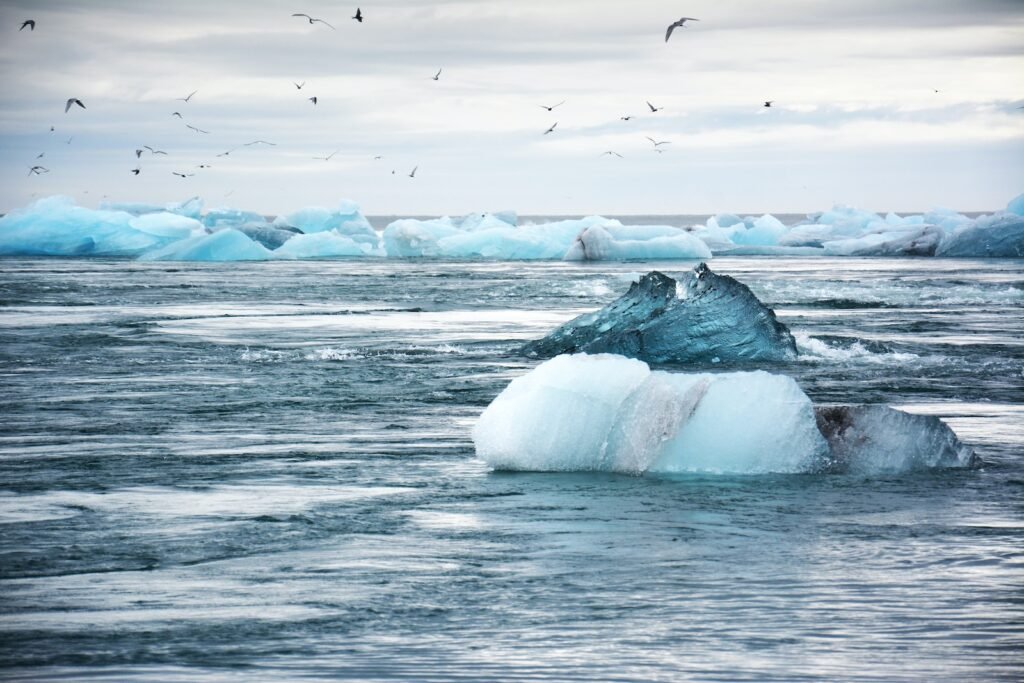Introduction: Examining the Shifting Global Weather Patterns
The Earth’s climate is constantly changing, and in recent years, the shifts in global weather patterns have become more evident. The year 2024 has marked a significant turning point, as the effects of climate change have become more pronounced and widespread. From rising temperatures to altered rainfall patterns, extreme weather events, disrupted ocean currents, melting ice caps, and escalating threats of droughts and heatwaves, the impacts of these changes are far-reaching. In this article, we will explore the changing climate of 2024 and its implications for our planet and its inhabitants.

Rising Temperatures: A Significant Climate Change Indicator
One of the most notable indicators of climate change is the continuous rise in global temperatures. 2024 witnessed record-breaking high temperatures in various regions across the world. This increase in temperature is attributed to the accumulation of greenhouse gases in the atmosphere, primarily from human activities such as burning fossil fuels and deforestation. The consequences of rising temperatures include the melting of glaciers, the loss of sea ice, and the disruption of ecosystems. It also contributes to the intensification of extreme weather events, such as heatwaves and hurricanes.
Precipitation Patterns: Unpredictable and Altered Rainfall
Another consequence of shifting global weather patterns is the alteration of precipitation patterns. In 2024, many areas experienced unpredictable rainfall, leading to both droughts and floods. The changing climate affects the distribution and intensity of rainfall, making it difficult to predict when and where it will occur. This unpredictability poses challenges for farmers, as it becomes more challenging to plan and manage agricultural activities. Additionally, altered rainfall patterns can have severe consequences on water resources, leading to water scarcity in certain regions and an increased risk of waterborne diseases.
Extreme Weather Events: Intensifying and Increasing in Frequency
Extreme weather events, such as hurricanes, heatwaves, and wildfires, have become more frequent and intense in recent years. In 2024, the world witnessed an escalation of these events, causing significant damage to both human lives and infrastructure. Rising temperatures fuel the intensity of hurricanes and heatwaves, while prolonged droughts increase the risk of wildfires. These extreme weather events pose a threat to human safety, food security, and economic stability. It is crucial for governments and communities to implement proactive measures to mitigate the impact of these events and enhance resilience.
Ocean Currents: Disrupted Circulation and Impacts on Climate
Ocean currents play a vital role in regulating global climate by distributing heat around the planet. However, the shifting global weather patterns have disrupted the circulation of ocean currents, leading to various consequences. Changes in ocean currents can affect regional climate systems, alter marine ecosystems, and impact global weather patterns. For instance, the disruption of the Gulf Stream could lead to colder temperatures in Europe and affect the distribution of marine species. Understanding and monitoring these changes is crucial for predicting future climate impacts and developing effective adaptation strategies.
Melting Ice Caps: Accelerating Sea-Level Rise and Albedo Effect
The accelerating melting of ice caps, such as those in the Arctic and Antarctic, is a significant concern in the changing climate of 2024. As these ice caps melt, they contribute to rising sea levels, which pose a threat to coastal communities and ecosystems. Additionally, the loss of ice caps reduces the Earth’s albedo, which is the ability to reflect sunlight. This, in turn, leads to further warming of the planet as less sunlight is reflected back into space. The melting of ice caps is a clear and visible consequence of climate change, demanding urgent action to reduce greenhouse gas emissions and mitigate sea-level rise.
Droughts and Heatwaves: Escalating Threats to Ecosystems and Agriculture
Droughts and heatwaves have become increasingly prevalent and severe due to shifting global weather patterns. In 2024, these extreme events posed escalating threats to ecosystems and agriculture. Droughts result in water scarcity, affecting crop production, livestock, and water supplies for both rural and urban communities. Heatwaves, on the other hand, can lead to heat-related illnesses, power outages, and further strain on water resources. These events also exacerbate the risk of wildfires, contributing to environmental degradation and loss of biodiversity.
Changing Wind Patterns: Impact on Weather Systems and Storms
Changes in wind patterns are another notable aspect of the shifting global weather patterns. In 2024, alterations in wind patterns were observed, influencing weather systems and storm formations. Wind plays a crucial role in moderating climate and distributing heat and moisture across the Earth’s surface. Shifts in wind patterns can lead to changes in precipitation patterns, affect the intensity and tracks of storms, and impact temperature distribution. Understanding the changes in wind patterns is essential for accurate weather forecasting and developing effective strategies to manage the impacts of climate change.
Shifts in Monsoons: Altered Rainfall Cycles and Regional Impacts
Monsoons, which are seasonal winds that bring heavy rainfall, are experiencing shifts in their patterns due to changing climate conditions. In 2024, altered monsoon cycles were observed, resulting in significant impacts on regional climates. Changes in monsoon patterns can lead to irregular rainfall distribution, affecting agriculture, water resources, and regional economies. Areas heavily reliant on monsoon rains, such as South Asia, face challenges in food security and water management. Adapting to these shifting monsoons requires innovative approaches in water conservation, crop diversification, and sustainable land management practices.
Climate Refugees: Migration Due to Environmental Displacement
The changing climate has forced many communities to face the harsh reality of environmental displacement. In 2024, the number of climate refugees increased as people were forced to migrate due to the loss of habitable land, rising sea levels, and extreme weather events. These climate-related migrations pose significant challenges for both the migrants and the communities they seek refuge in. It is essential for governments to develop policies that address the needs of climate refugees, support their resettlement, and work towards global climate justice.
Impacts on Biodiversity: Loss of Habitats and Ecological Adaptation
The shifting global weather patterns have profound consequences for biodiversity. In 2024, the loss of habitats and ecological disruption became more evident. Changes in temperature, rainfall patterns, and extreme weather events can lead to habitat loss, species extinction, and disruptions in ecological interactions. Many species are struggling to adapt to the rapid changes, threatening the delicate balance of ecosystems. Protecting biodiversity and promoting conservation efforts are crucial in mitigating the impacts of climate change and preserving the Earth’s natural heritage.
Mitigation and Adaptation Strategies: Addressing Climate Challenges
In response to the shifting global weather patterns and their consequences, it is imperative to implement both mitigation and adaptation strategies. Mitigation involves reducing greenhouse gas emissions to slow down climate change, while adaptation focuses on adjusting to the impacts that are already occurring. Mitigation strategies may include transitioning to renewable energy sources, promoting energy efficiency, and implementing sustainable land management practices. Adaptation strategies involve measures such as improving infrastructure resilience, developing early warning systems for extreme weather events, and enhancing community preparedness. A comprehensive approach incorporating both mitigation and adaptation is essential to address the challenges posed by the changing climate of 2024.
The shifting global weather patterns of 2024 have highlighted the urgent need for action to address climate change. Rising temperatures, altered precipitation patterns, extreme weather events, disrupted ocean currents, melting ice caps, droughts, and heatwaves all demand immediate attention. As we face these challenges, it is crucial for governments, communities, and individuals to come together and implement strategies that mitigate the impacts of climate change and promote adaptation. By reducing greenhouse gas emissions, protecting ecosystems, and fostering sustainable practices, we can strive towards a more resilient and sustainable future for our planet and future generations.

